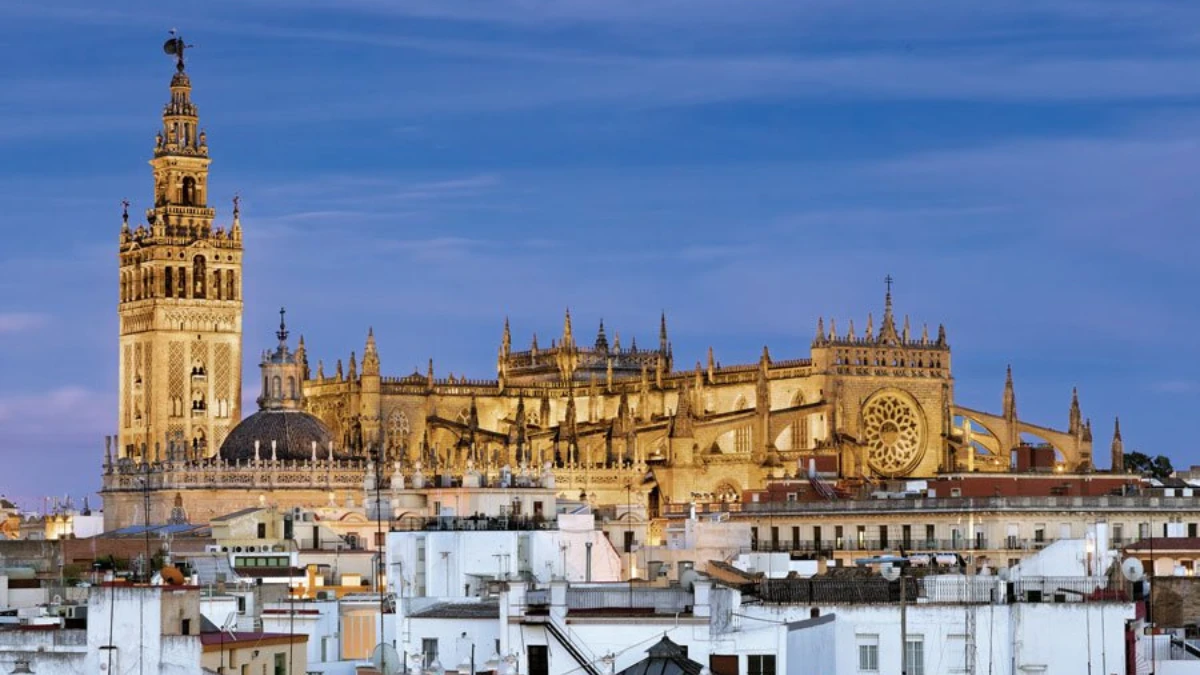Seville Cathedral, or Catedral de Santa María de la Sede, is one of the largest and most well-known churches in the world.
With over 800 years of history, this cathedral has witnessed Islamic rule, Christian conquest, natural disasters, and artistic revolutions.
In this guide, you’ll explore the cathedral’s fascinating history, from mosque to Gothic masterpiece, and the features you shouldn’t miss.
What’s ahead
Timeline: Key moments in Seville Cathedral’s history
Here’s a quick look at how Seville Cathedral evolved:
- 1184–1198: Construction of the Great Mosque by the Almohads
- 1248: Christian conquest of Seville; mosque becomes a cathedral
- 1401: Construction of the Gothic cathedral begins
- 1507: Cathedral consecrated for worship
- 1528: Official completion of the cathedral
- 1755: Lisbon earthquake damages cathedral; repairs follow
- 1987: Declared a UNESCO World Heritage Site
From mosque to cathedral: the Islamic roots of Seville Cathedral
Before the cathedral, this site was home to the Great Mosque of Seville, constructed in the late 12th century under the Almohad Caliphate.
It featured a large prayer hall, an open courtyard (now the Patio de los Naranjos), and a minaret, the iconic Giralda Tower.
When King Ferdinand III of Castile captured Seville in 1248, the mosque was consecrated as a Christian cathedral.
Rather than demolish the existing structure, Christian rulers incorporated Islamic features into the evolving Gothic design.
This unique architectural fusion is what sets Seville Cathedral apart even today.
A bold vision: Building a Gothic marvel
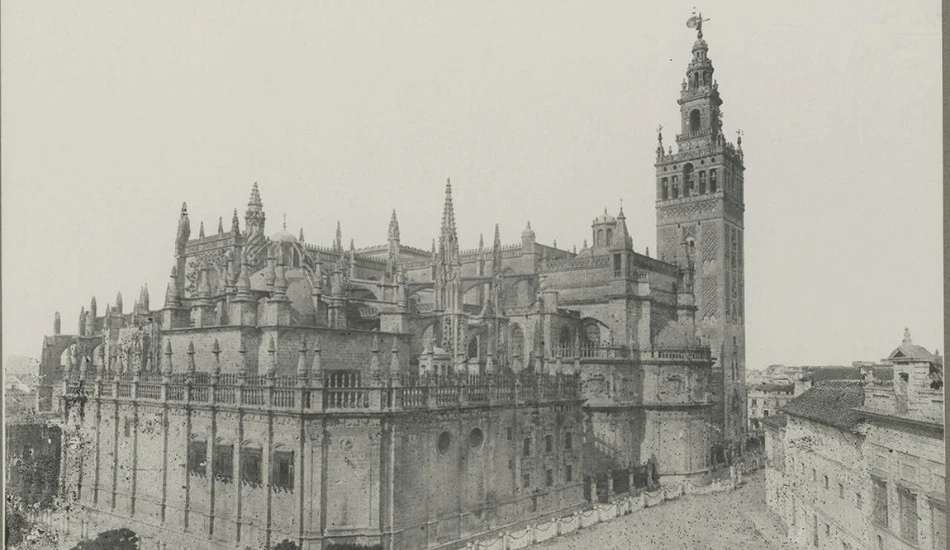
By the late 14th century, the old mosque-turned-cathedral was in disrepair.
Seville’s leaders made an ambitious plan:
“Let us build a church so beautiful and so grand that those who see it finished will think we are mad.”
Construction of the new Gothic cathedral began in 1401. Over a century later, it was consecrated in 1507 and completed in 1528.
The structure included pointed arches, intricate stone carvings, and soaring vaulted ceilings, making it one of the largest Gothic cathedrals in the world.
This period of architectural growth reflected Seville’s rising power, status, and religious pride.
The golden age: Seville’s wealth fuels cathedral artistry
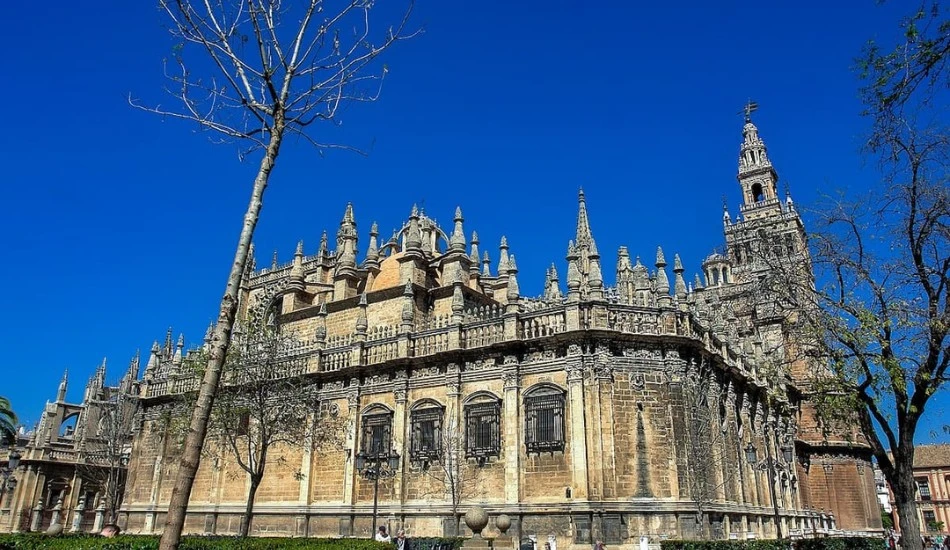
The 16th century marked Seville’s golden era, thanks to its role as Spain’s main trading port with the Americas.
This prosperity directly influenced the cathedral’s grandeur.
The most notable additions during this time include:
The Retablo Mayor: A gigantic, gold-covered Gothic altarpiece, considered one of the largest and most elaborate in the world. It took nearly 80 years to complete.
The dome: Finished in 1519, it further emphasized the cathedral’s architectural dominance.
Christopher Columbus’s tomb: His remains were interred here, though debate still surrounds their authenticity.
These elements helped cement Seville Cathedral’s place as a religious and cultural treasure.
Find more such historical facts about Seville Cathedral
Must-see features inside Seville Cathedral
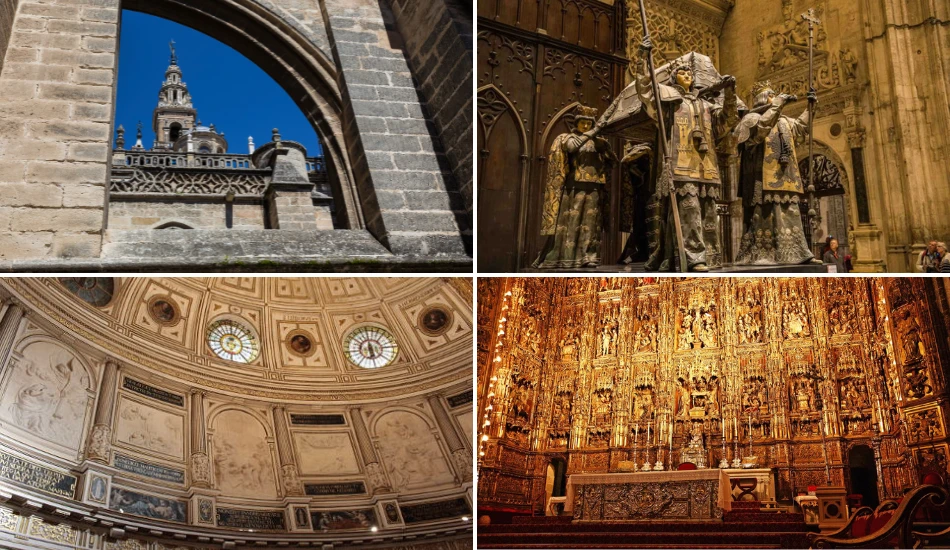
The Giralda Tower: Originally the minaret of the mosque, it became the bell tower of the cathedral. It is an iconic symbol of Seville and offers panoramic views of the city.
Tomb of Christopher Columbus: The cathedral is the final resting place of the famous explorer, though there is debate about whether his remains are actually there.
The Main Altarpiece: Known as the Retablo Mayor, it is one of the largest and most beautiful altarpieces in the world, covered in gold.
The Chapter House and Treasury: These sections contain priceless artworks, religious relics, and historical artifacts.
Stained Glass Windows: The cathedral features some of the most exquisite stained-glass windows in Spain, depicting biblical scenes and saints, contributing to the ethereal atmosphere inside.
Read this: Things to see inside Seville Cathedral
Restorations and architectural layering over time
Seville Cathedral is not a static monument. It has evolved through periods of destruction and renewal.
- In the 16th century, details of the Renaissance were added to blend with the Gothic core.
- The 1755 Lisbon Earthquake caused structural damage, prompting major repairs.
- In the 19th and 20th centuries, additional restorations preserved both Islamic and Christian elements.
These changes created a layered architectural identity, turning the cathedral into a time capsule of styles and influences.
Why Seville Cathedral remains iconic today
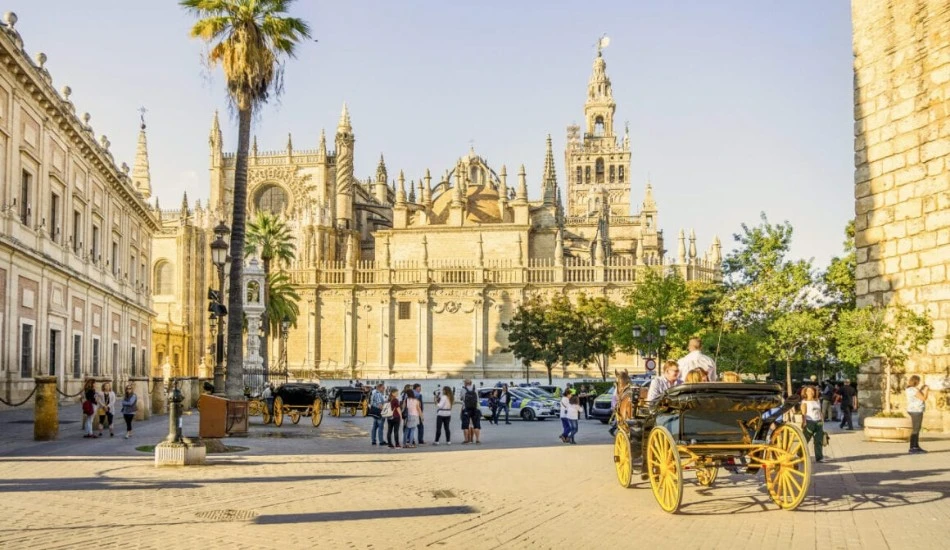
In 1987, Seville Cathedral was declared a UNESCO World Heritage Site, along with the Royal Alcázar and Archivo de Indias. It continues to be a vital religious, historical, and cultural site.
- Hosts Holy Week processions that draw thousands
- Serves as a venue for concerts and national ceremonies
- Attracts millions of visitors who admire its design, history, and peaceful energy
More than just a building, it remains a symbol of Seville’s past and present.

